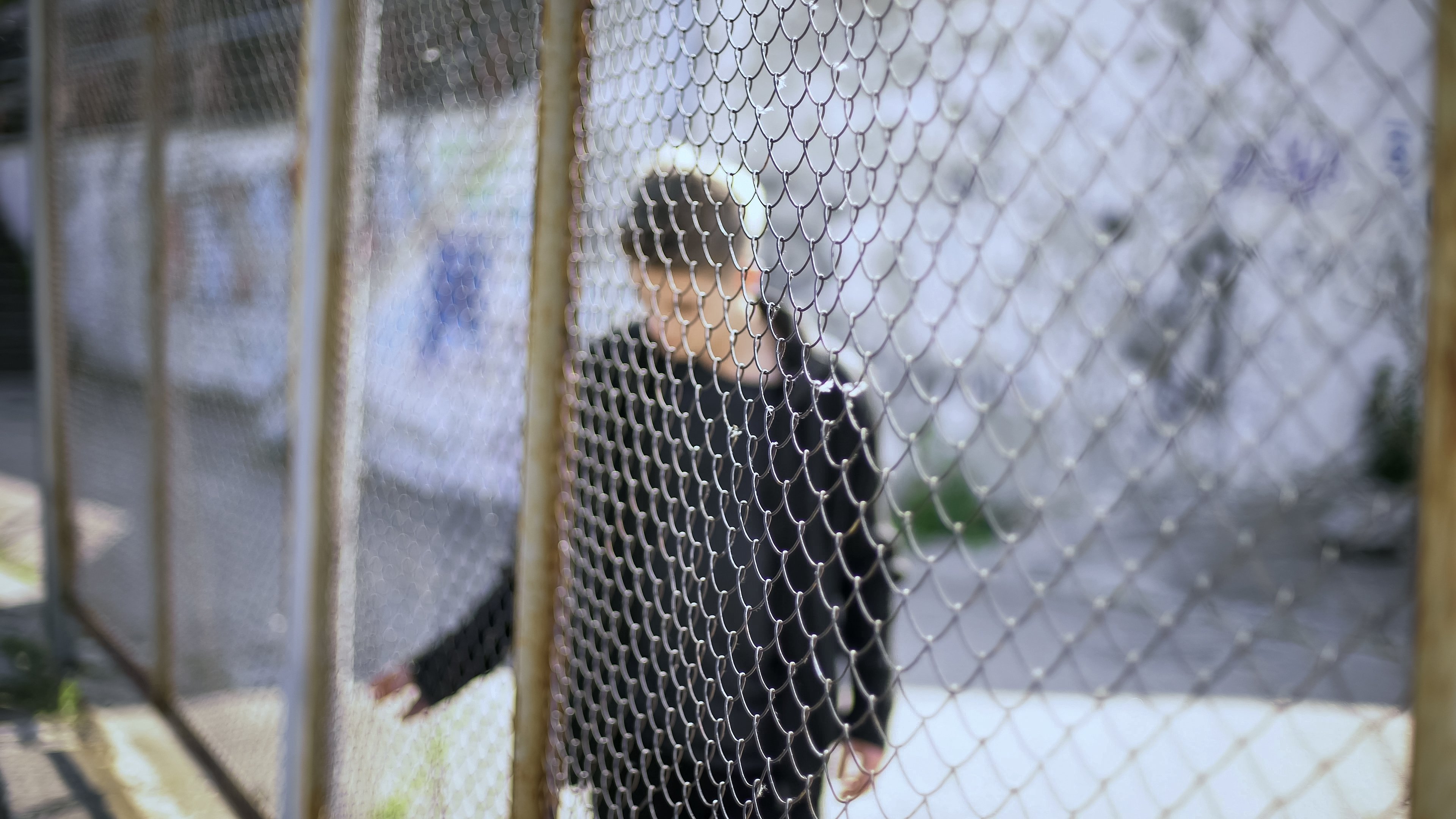 Solitary confinement is defined as the isolation of an incarcerated person for 22 to 24 hours per day; often the only interactions a prisoner can expect during solitary are brief encounters with prison guards. Evidence found in the International Journal of Offender Therapy & Comparative Criminology points to the historical Quakers as being the originators of solitary confinement, and it was initially intended to be used as a way to make prisoners take a few days to reflect on their wrongdoings. It wasn’t long, however, before solitary confinement instead came to be used in prisons as a form of punishment, sometimes lasting for weeks, months, and in some cases, even years. The first research into the effects of solitary confinement dates back to the 1830s, after the practice had been introduced to the Eastern State Penitentiary in Philadelphia. Many visitors reported seeing a high rate of mental breakdown among prisoners in solitary, one of the most famous being Charles Dickens, who toured the facility while visiting the United States. Dickens described solitary confinement as a “slow and daily tampering with the mysteries of the brain,” that was “immeasurably worse than any torture of the body.”
Solitary confinement is defined as the isolation of an incarcerated person for 22 to 24 hours per day; often the only interactions a prisoner can expect during solitary are brief encounters with prison guards. Evidence found in the International Journal of Offender Therapy & Comparative Criminology points to the historical Quakers as being the originators of solitary confinement, and it was initially intended to be used as a way to make prisoners take a few days to reflect on their wrongdoings. It wasn’t long, however, before solitary confinement instead came to be used in prisons as a form of punishment, sometimes lasting for weeks, months, and in some cases, even years. The first research into the effects of solitary confinement dates back to the 1830s, after the practice had been introduced to the Eastern State Penitentiary in Philadelphia. Many visitors reported seeing a high rate of mental breakdown among prisoners in solitary, one of the most famous being Charles Dickens, who toured the facility while visiting the United States. Dickens described solitary confinement as a “slow and daily tampering with the mysteries of the brain,” that was “immeasurably worse than any torture of the body.”


 The move away from traditional detention settings for juvenile offenders, and instead toward more rehabilitative ones, has been a process long in the making in juvenile justice departments across the United States. Many states have made great strides in relying less on incarceration and more on community-based alternative services for their young offenders. Often, the biggest roadblock that states run into in attempting to make these types of changes to their systems is figuring out exactly how to fund them. This very question is the subject of a recently released report by researchers at the Urban Institute, who suggest that communities simply need to get creative when it comes to funding juvenile justice programs. According to Samantha Harvell, a principal policy associate at the institute, “It’s time to shift the conversation to a solutions-based approach.”
The move away from traditional detention settings for juvenile offenders, and instead toward more rehabilitative ones, has been a process long in the making in juvenile justice departments across the United States. Many states have made great strides in relying less on incarceration and more on community-based alternative services for their young offenders. Often, the biggest roadblock that states run into in attempting to make these types of changes to their systems is figuring out exactly how to fund them. This very question is the subject of a recently released report by researchers at the Urban Institute, who suggest that communities simply need to get creative when it comes to funding juvenile justice programs. According to Samantha Harvell, a principal policy associate at the institute, “It’s time to shift the conversation to a solutions-based approach.” 
 More than a decade ago, Utah resident Tanner Atwood-Bowen was a teenager the night he and two friends found a four-wheeler and took it for a spin around their neighborhood. Although the boys knew this was a mistake, officers soon arrested them. Atwood-Bowen later admitted to a felony theft charge in Utah's juvenile justice system and was required to pay the court about $5,000 in fees. A year later he was able to have the record expunged -- and yet the conviction has still managed to follow him into his adult life. In 2017 Atwood-Bowen was in the process of training as a probation officer, which requires the disclosure of felony convictions. As his juvenile record was expunged, Atwood-Bowen did not include it on his application per a court worker’s instructions. But a police standards board accused Atwood-Bowen of lying on his application, and ultimately barred him from working in law enforcement for two years. Since then he has gone on to open his own real estate business, but the police standard’s board decision, as a matter of public record, comes up in Google results when his name is searched, and Atwood-Bowen says this has hurt his ability to grow his business. Atwood-Bowen, who is now 29, believes that he could have avoided these professional issues related to his conviction if he had been allowed access to an attorney.
More than a decade ago, Utah resident Tanner Atwood-Bowen was a teenager the night he and two friends found a four-wheeler and took it for a spin around their neighborhood. Although the boys knew this was a mistake, officers soon arrested them. Atwood-Bowen later admitted to a felony theft charge in Utah's juvenile justice system and was required to pay the court about $5,000 in fees. A year later he was able to have the record expunged -- and yet the conviction has still managed to follow him into his adult life. In 2017 Atwood-Bowen was in the process of training as a probation officer, which requires the disclosure of felony convictions. As his juvenile record was expunged, Atwood-Bowen did not include it on his application per a court worker’s instructions. But a police standards board accused Atwood-Bowen of lying on his application, and ultimately barred him from working in law enforcement for two years. Since then he has gone on to open his own real estate business, but the police standard’s board decision, as a matter of public record, comes up in Google results when his name is searched, and Atwood-Bowen says this has hurt his ability to grow his business. Atwood-Bowen, who is now 29, believes that he could have avoided these professional issues related to his conviction if he had been allowed access to an attorney. Many young people worry that their criminal past will follow them throughout their lives. As soon as a juvenile comes into contact with law enforcement, a criminal record is opened on them, and this record will contain every single document that is created by the police department, court, district attorney, and probation department in relation to the juvenile’s criminal activity. A common misconception about juvenile records is the belief that, once a youth turns 18, the record disappears; this, however, is often not the case, and a juvenile criminal record can create serious obstacles in adulthood. It can prevent a young person from receiving financial aid to assist with college tuition, harm their ability to get a job or join the military, and impede licensure eligibility for certain professions. It can also affect eligibility for public housing, not only for the adolescent but also for the family they are residing with. In recent years, some states have added laws to try and keep juvenile records from haunting adults, but not all states have such safeguards in place.
Many young people worry that their criminal past will follow them throughout their lives. As soon as a juvenile comes into contact with law enforcement, a criminal record is opened on them, and this record will contain every single document that is created by the police department, court, district attorney, and probation department in relation to the juvenile’s criminal activity. A common misconception about juvenile records is the belief that, once a youth turns 18, the record disappears; this, however, is often not the case, and a juvenile criminal record can create serious obstacles in adulthood. It can prevent a young person from receiving financial aid to assist with college tuition, harm their ability to get a job or join the military, and impede licensure eligibility for certain professions. It can also affect eligibility for public housing, not only for the adolescent but also for the family they are residing with. In recent years, some states have added laws to try and keep juvenile records from haunting adults, but not all states have such safeguards in place. When Toney Jennings was arrested in 2010, he was a 16-year-old being raised by his grandmother in Caledonia, Mississippi. He loved playing football and going fishing. Despite having a diagnosed learning disability and an Individualized Educational Program (IEP), by the time he was in high school, Jennings was so far behind in school that he was labeled as illiterate. A series of behavioral issues led his teachers to recommend that Jennings’ grandmother send him to an alternative school. When he entered the school, Jennings read at a kindergartener’s level and his math skills were that of a first-grader. But he began making progress there, where teachers were able to give him the individual help his IEP entitled him to. Being arrested, however, stopped his progress in its tracks. That’s because, for the six months that Jennings was in a juvenile detention facility, he didn’t attend any classes at all. Instead, Jennings says that he watched television, played basketball, and “basically just stayed to myself.”
When Toney Jennings was arrested in 2010, he was a 16-year-old being raised by his grandmother in Caledonia, Mississippi. He loved playing football and going fishing. Despite having a diagnosed learning disability and an Individualized Educational Program (IEP), by the time he was in high school, Jennings was so far behind in school that he was labeled as illiterate. A series of behavioral issues led his teachers to recommend that Jennings’ grandmother send him to an alternative school. When he entered the school, Jennings read at a kindergartener’s level and his math skills were that of a first-grader. But he began making progress there, where teachers were able to give him the individual help his IEP entitled him to. Being arrested, however, stopped his progress in its tracks. That’s because, for the six months that Jennings was in a juvenile detention facility, he didn’t attend any classes at all. Instead, Jennings says that he watched television, played basketball, and “basically just stayed to myself.” Providing students with a safe and healthy learning environment is the goal of school administrators across the nation, and in the last few decades this goal has grown to include preventing students from using tobacco, alcohol, and drugs. One of the first programs to address this issue was D.A.R.E., which began in Los Angeles in the early 1980s. Studies on the program’s efficacy, however, have shown the results to be mixed at best, and in some cases, the prevalence of drug use in teens increased. In response to this, school administrators began looking elsewhere to find solutions to this issue. Some administrators drew inspiration from workplace drug testing policies, the result of which has been the implementation of random drug testing programs for students in schools across the nation. Such policies have left both parents and students alike uneasy about the process, and experts unconvinced of such a policy’s effectiveness to curb youth substance use.
Providing students with a safe and healthy learning environment is the goal of school administrators across the nation, and in the last few decades this goal has grown to include preventing students from using tobacco, alcohol, and drugs. One of the first programs to address this issue was D.A.R.E., which began in Los Angeles in the early 1980s. Studies on the program’s efficacy, however, have shown the results to be mixed at best, and in some cases, the prevalence of drug use in teens increased. In response to this, school administrators began looking elsewhere to find solutions to this issue. Some administrators drew inspiration from workplace drug testing policies, the result of which has been the implementation of random drug testing programs for students in schools across the nation. Such policies have left both parents and students alike uneasy about the process, and experts unconvinced of such a policy’s effectiveness to curb youth substance use.  Twenty-five-year-old Lonnie Wright grew up in East Oakland, an area well known for its high levels of crime. “We were just in the heart of drugs, violence and guns and death,” says Wright of his childhood. Growing up, his involvement in his school’s football team kept Wright out of trouble; when he lost his spot on the high school team, that began to change. Wright lost interest in school and began getting into trouble. The first time he ended up in juvenile hall for stealing a car, he was just sixteen, and it didn’t take long for Wright to find that pepper spray was used with alarming frequency when the inmates didn’t listen to instructions, or when fights broke out.
Twenty-five-year-old Lonnie Wright grew up in East Oakland, an area well known for its high levels of crime. “We were just in the heart of drugs, violence and guns and death,” says Wright of his childhood. Growing up, his involvement in his school’s football team kept Wright out of trouble; when he lost his spot on the high school team, that began to change. Wright lost interest in school and began getting into trouble. The first time he ended up in juvenile hall for stealing a car, he was just sixteen, and it didn’t take long for Wright to find that pepper spray was used with alarming frequency when the inmates didn’t listen to instructions, or when fights broke out. 
